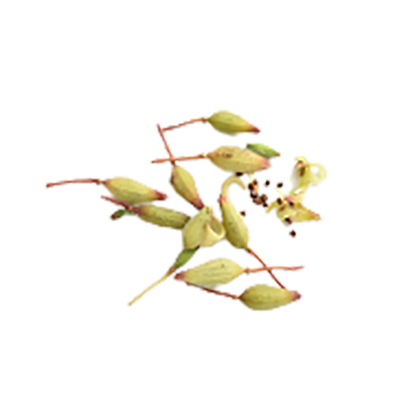Garden Balsam
Impatiens balsamina L.
Balsaminaceae
Location in our garden
Principal



Synonym
Balsamina balsamina (L.) Huth
Balsamina coccinea (Sims) DC.
Balsamina cornuta (L.) DC.
Habitus
Herbaceous. Annual to perennial plant with weak, succulent stems, growing around 80 cm tall.
Part Used
Leaves
Seeds
Flowers
Roots
Growing Requirements
Full Sunshine
Drought Resistant
Habitat
Grassland
Overview
The plant is thought to be native to India and Myanmar. It has been widely introduced outside of its native range as an ornamental to Europe, Asia, the
Americas, Oceania and some parts of tropical Africa. The plant is harvested from the wild for local use as a food, medicine, dye etc.
Vernacular Names
Bungatabo (Malaysia), Kamantigi (Philippines), Thian baan (Thailand), Dushparijati (India), Feng xian hua (China), Tsuri-fune-so (Japan), Balsamine des jardins
Agroecology
This species can be found easily growing from sea level to 1250 m altitude on wet area. It prefers loose and well-drained soil. In the tropics, it will flower all year round.
Morphology
- Stems - erect, succulent, simple or sparsely branched, glabrous, often pubescent when young, with swollen joints.
- Leaves - spirally-arranged, the lowermost occasionally pseudo-opposite, sessile or shortly petiolate, lanceolate to narrowly elliptic or oblanceolate, glabrous or finely pubescent above and below.
- Flowers - white or variegated; lateral sepals 2-3 mm, narrowly ovate-lanceolate, the apex acute, lower sepal 13-19 mm, 0.4-0.8 cm deep, deeply navicular, abruptly constricted into a spur, filiform, incurved in the distal half, glabrous or finely pubescent, upper petal 10-14 x 7-11 mm, apically pointed with an appendage 2-4 mm; lateral petals 23-35 mm, fully united, unevenly bilobed, the upper petal of each lateral pair smaller than the lower; ovary densely pubescent.
- Fruit - capsules 12-20 x 6-8 mm, broadly fusiform, densely white hair; explosively dehiscent
- Seeds - many, black-brown, globose, 1.5-3 mm in diameter, tuberculate.
Cultivation
- This plant is easily cultivated by seeds. For the potting material, coconut dust: coarse sand: and clayey soil = 3:1:1 is recommended.
Chemical Constituents
- Flower : Anthocyanins, Cyanidin, Delphinidin, Pelargonidin, Malvidin, Kaempherol and Quercetin, Flavonols
- Seed : Parinaric Acid, Linolenic acid
Traditional Medicinal Uses
- The flowers, and their alcoholic extract, possess marked antibiotic activity against some pathogenic fungi and bacteria.
- The powdered seeds are given to women during labor in order to provide strength.
- The flowers are having a cooling effect, when applied to burns and scalds.
- The leaf juice is used as a treatment against warts. The leaves, and sometimes with the root, are pounded and used as a poultice on wounds and skin inflammations. They are combined with salt and castor oil to make a poultice that is packed around a finger affected by whitlow; the whitlow disappears in a short time. The mix is also used to heal torn finger and toe nails.
- Women in Brunei use the decocted roots for the treatment of irregular menses.
Part Used
Reference Sources
Lemmens, R.H.M.J. & Wulijarni-Soetjipto, N. (Editors), 1992. Plant Resources of South-East Asia No. 3. Dye and Tannin-Producing Plants. Prosea Foundation, Bogor, Indonesia. 194 pp.




